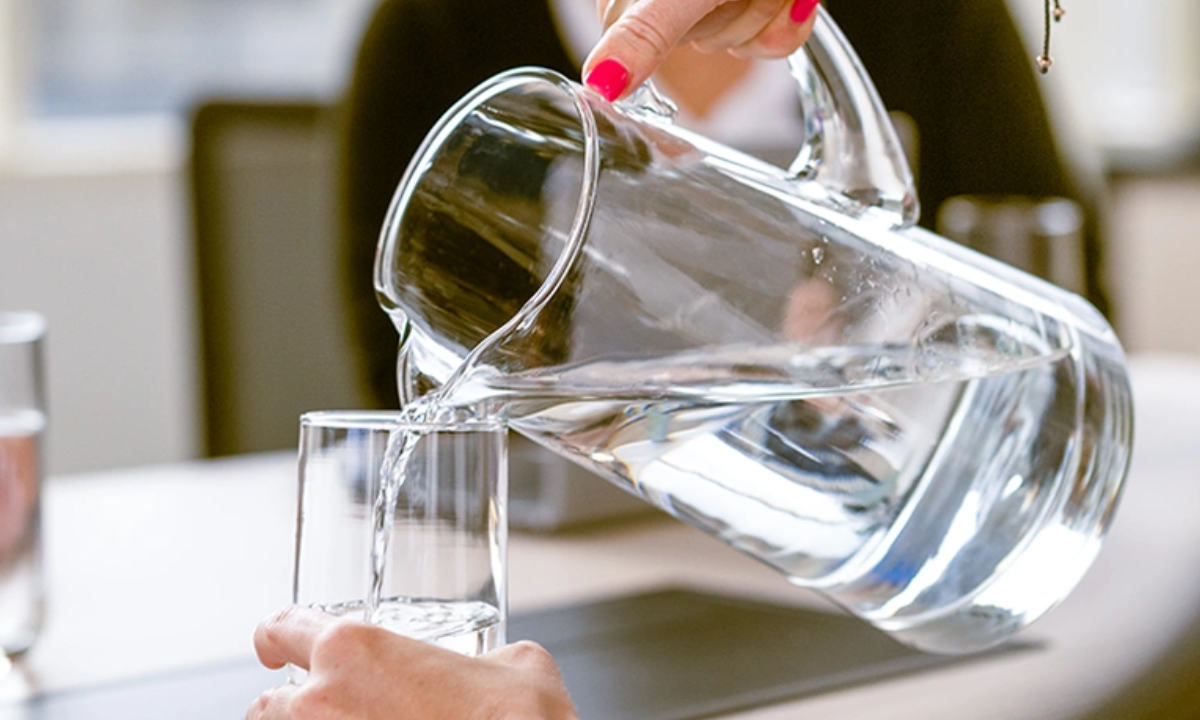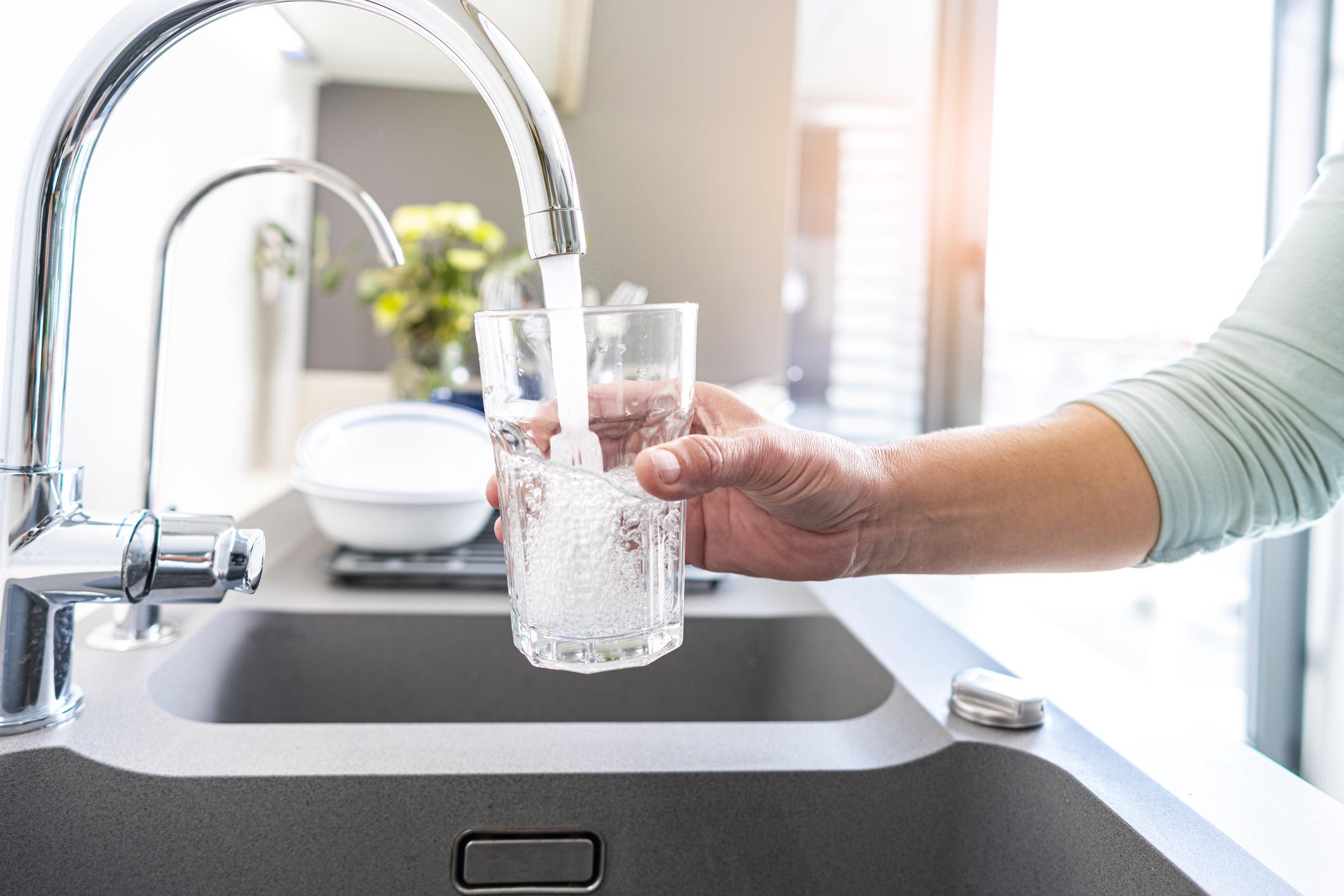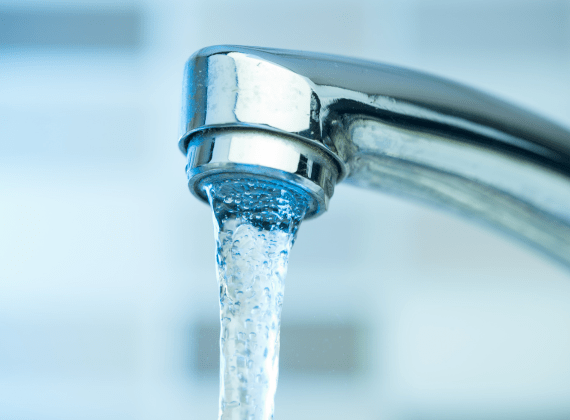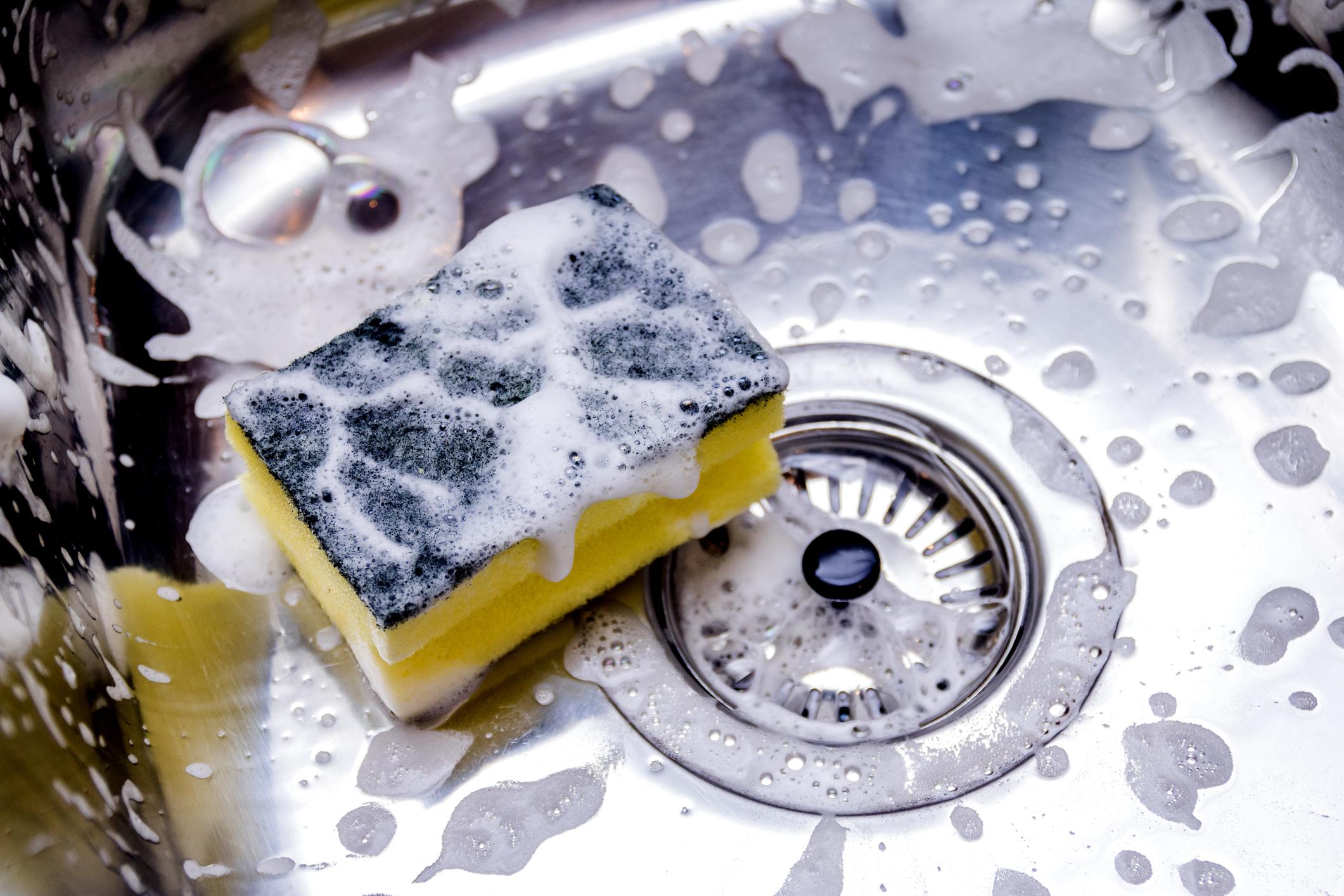

Stainless steel, when clean, offers sparkle and sophistication to your kitchen. Yet, left alone without proper care, stainless steel can become dull, grey and grimy making a kitchen lifeless and unappealing.
Fortunately, stainless steel is one of the easiest surface materials to maintain, especially if you stick to some of these essential dos and don’ts of surface maintenance.
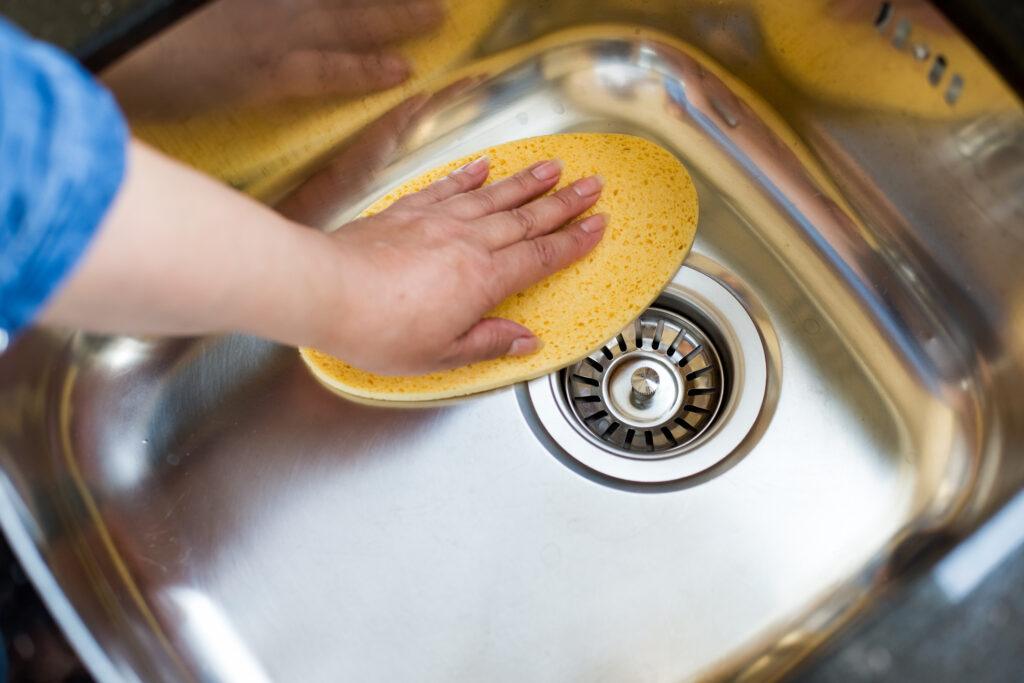
The challenges of stainless steel
While stainless steel looks stunning when clean, it is more challenging than most surface materials to maintain a clean finish. It is a surface that quickly shows fingerprints and streaks, keeping you in a perpetual state of despair at the state of your kitchen.
It is also important to realise that there are different types of stainless steel, not just one standard material. Therefore, understanding what to use to clean your appliances takes some experimentation to see what works best. It may be that you will have to use a range of the cleaning techniques in your kitchen, matching the right approach to your appliances.
What you should do to clean your stainless steel
The manufacturer’s instructions are the best place to begin your exploration of these cleaning techniques. The appliance likely comes with details of the best approach to keeping its shine. There will be recommendations for the best chemicals to maintain the finish without causing damage or unnecessary wear.
While this sounds like a disclaimer, and it is, the manufacturer has tested what works for your particular fridge, oven cooker hood and splashbacks which will likely premise the warranty of your item on you following these instructions.
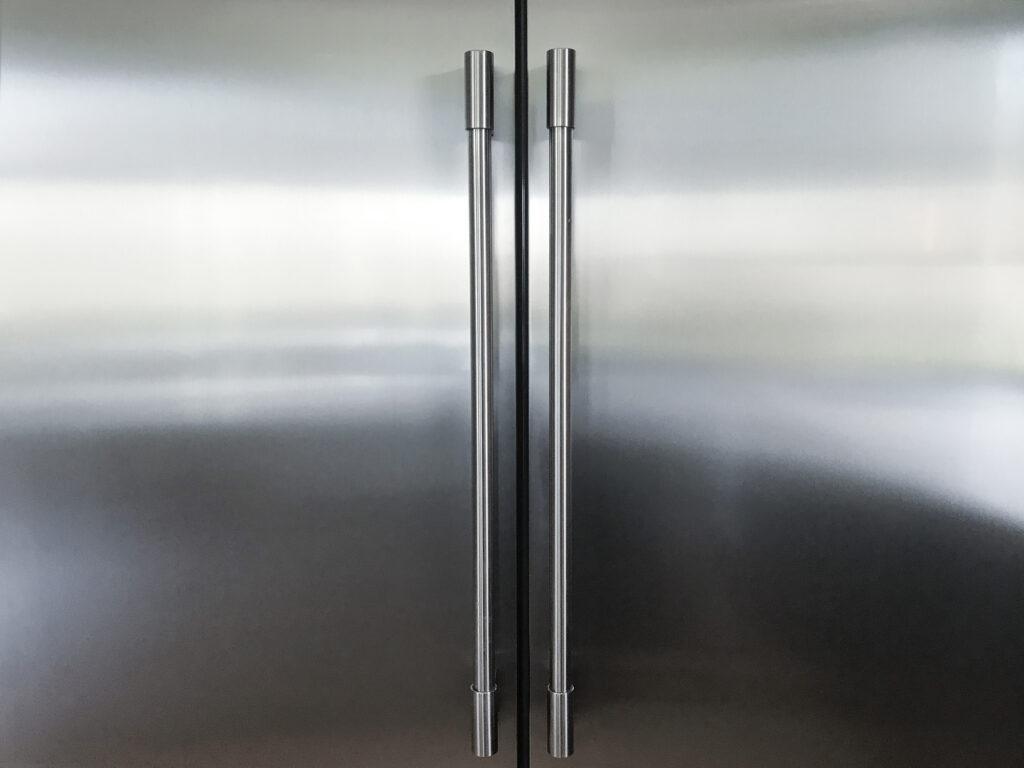
If there are no cleaning instructions or the appliance manual lists a product you are unaware of, some approaches have proven useful for most stainless steel appliances. We explore the most common of these in this article.
The dos of cleaning stainless steel
First, using a soft cloth dampened with warm water is often enough for general, everyday cleaning. The stainless steel surface is designed to be quick to clean and does not easily stain, hence its name.
If your surface is full of fingerprints that seem to smear as you wipe, you can use glass cleaner to eliminate these. It shouldn’t take more than a simple spritz and wipe. Be sure to wipe in the direction of the material’s grain to avoid leaving streaks as you clean.
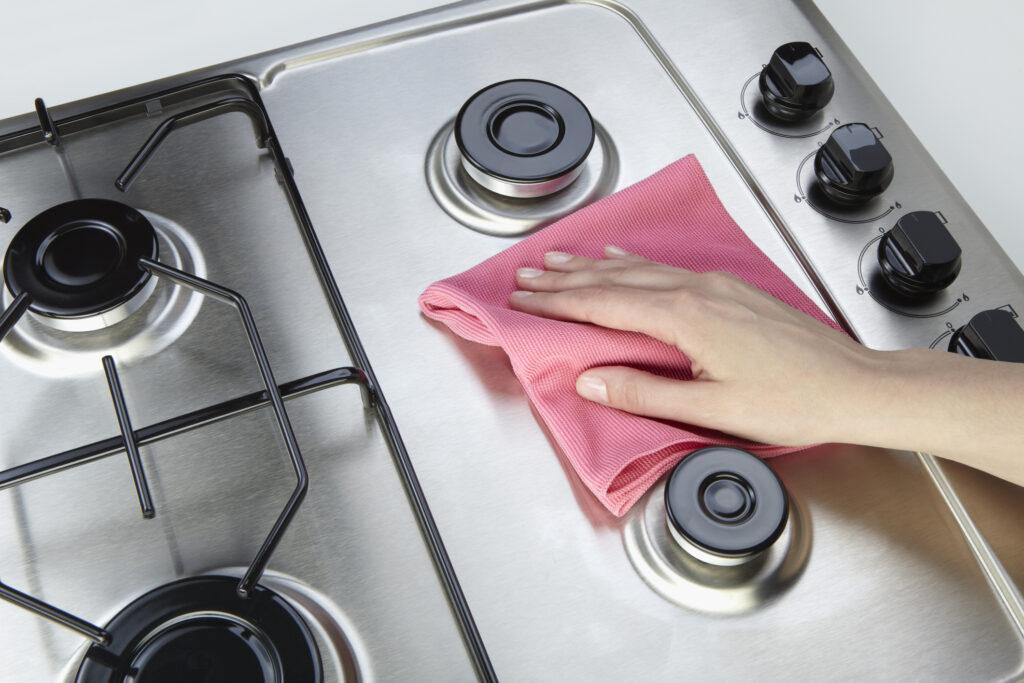
Dry the surface with a towel after cleaning, to avoid drip marks or watermarks. If you leave it to dry naturally and live in a hard water area, you may see water spots develop.
If there are stains on the surface, you can use some commercial cleaners. However, it’s important to do this with care, as some cleaners can be abrasive and cause damage to stainless steel. It is important to:
- Read the directions carefully and check against your manufacturer’s instructions
- Do a spot-test first on an area that is hard to see just in case there is an unexpected reaction
If you are looking for some quick things you can do with stainless steel, try these:
- Regularly clean the surface using warm water and a microfibre cloth
- Add some washing-up liquid to the water for tough dirt – but remember to use a non-abrasive cloth
- Get some stainless steel specialist cleaner if it is looking drab
- Completely dry the surface
- Return the gleam to the surface by rubbing in some mineral oil with a soft towel; remember to wipe with the steel grain for the best results
The don’ts of cleaning stainless steel
There are some important cleaning techniques you shouldn’t use with stainless steel. We’ve taken these learnings to share with you. For instance, do not to use steel wool or brushes on your stainless steel appliance as it will scratch the surface and leave it susceptible to rusting and staining.
Less obvious is that using abrasive cleaning materials can affect your stainless steel too. While you might think that a powerful cleaner is best, it can corrode the surface and, over time, leave it looking dull and worn. Indeed, bleach-based cleaners that include chlorine will stain and damage your surface. Consequently, you need to read the instructions carefully.
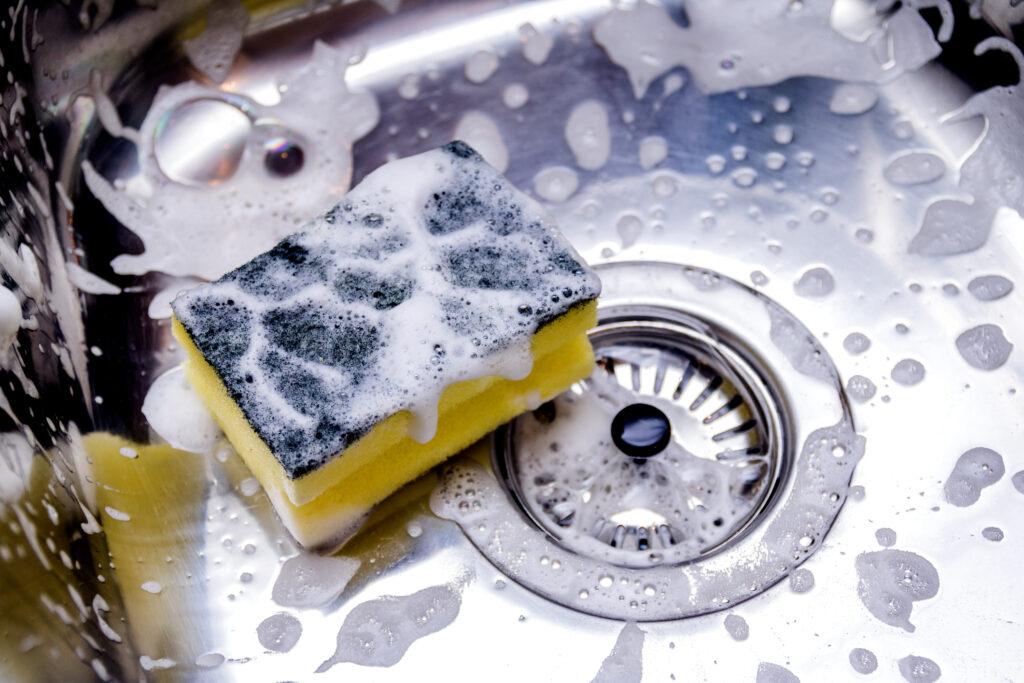
It is possible that tap water in certain areas around the country could also be harsh on stainless steel. Additives to our water supply can leave spots and stains on the surface. If this is the case in your area, you should use distilled or filtered water instead. While this might seem like a hassle, getting a jug that filters your water could make all the difference to the lasting shine of your stainless steel appliances.
Finally, be sure to remove all water and cleaning agent residue from the surface as it could permanently stain your surfaces.
For a quick guide, here are the don’ts:
- Never use steel wool or metal brush, as it will scratch the surface
- Never use bleach-based products that will damage the stainless steel
- Use a new cleaning cloth and towel; never use one that has already been dirtied in other cleaning jobs
The best DIY stainless steel cleaners
While there are specialist stainless steel cleaners to buy, some do-it-yourself mixtures have been tried and tested on surfaces. Here we offer some concoctions for you to try, though remember to test a spot that cannot be seen before attempting to do the whole appliance.
Vinegar and olive oil
You will need to some distilled white vinegar, olive oil and microfibre cloths, perfect for wiping a stainless steel surface without fear of scratching or dulling.
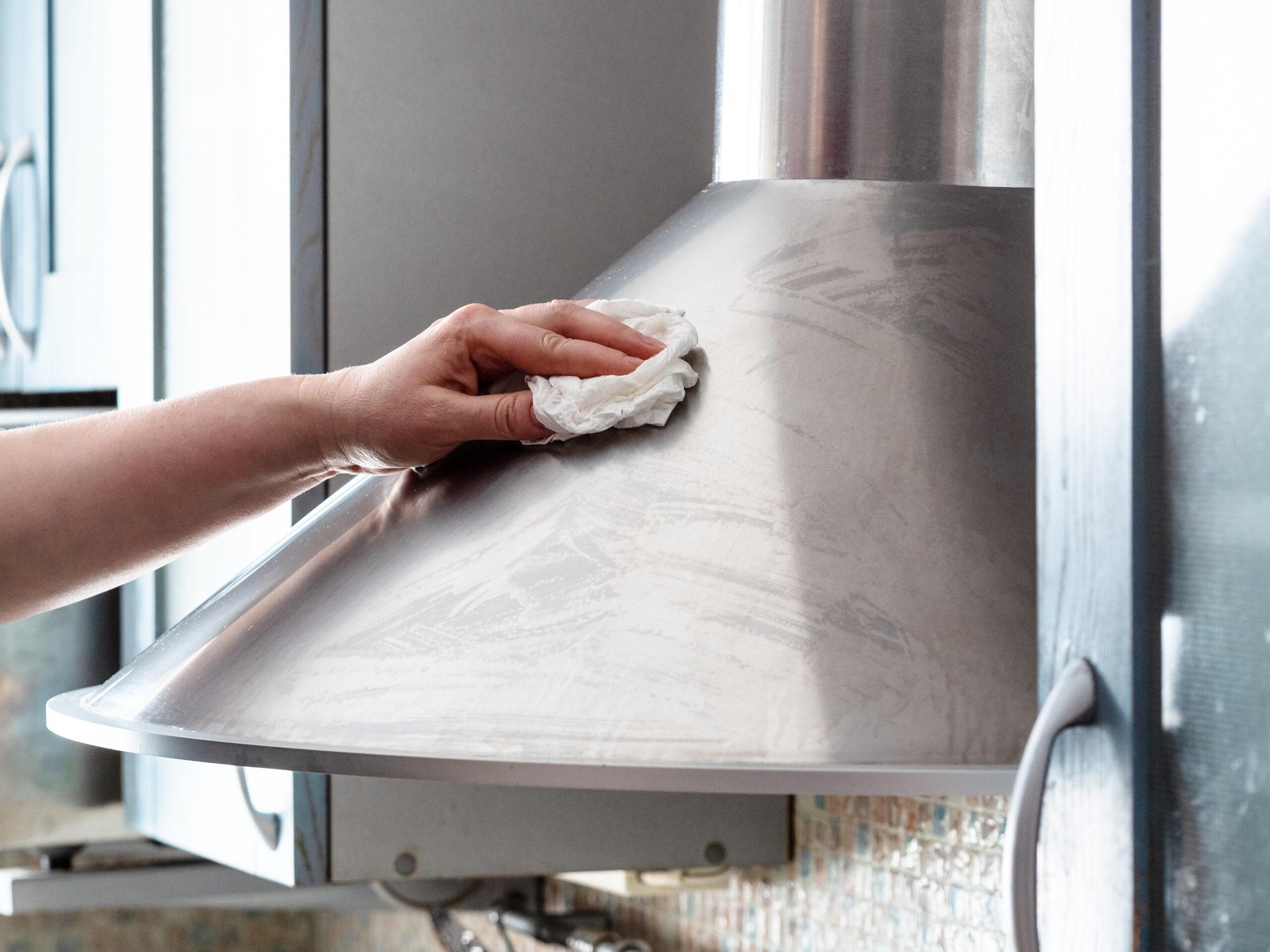
Then, in small sections, follow these instructions:
- Dampen your cloth with the vinegar and rub with the steel grain, removing dirt, grease and grime that can build up over time
- Let the vinegar dry
- Using a second microfibre cloth, rub olive oil into this section. Again, rub with the grain of the metal. You will find that this brings the shine back to your stainless steel after removing that built-up grime
This is a simple approach to cleaning your appliances to a high shine. Remember to work in small sections for the best effect. This combination is also perfect for those living in a hard water area who may be suffering from hard water spots on their stainless steel surfaces. Remember that the longer you leave it between cleans, the more likely you are to see the development of limescale on stainless steel.
Keeping on top of your cleaning regime will allow you to remove hard water stains from stainless steel much more effortlessly.
Limescale thrives in the hot parts of your home, learn how to remove limescale from your kettle with our helpful guide.
Dish soap and baby oil
With this approach, you will need three microfibre cloths, normal hand soap, baby oil and warm water. Then, follow these steps:
- Mix a teaspoon of soap with a quarter litre of warm water
- Use this mixture to dampen your microfibre cloth and use to clean towards the stainless steel grain
- Be sure to wipe away any residue with the dry microfibre cloth
- Allow the surface to dry completely
- Using your third microfibre cloth, use a dab of baby oil and work it into the surface, going with the grain
Taking care and shining bright
With the proper care and attention, your stainless steel appliances can maintain their lustre and the glamour of your kitchen. Keeping the surface clean can also avoid permanent damage and corrosion, as any scratch can quickly become an eyesore.
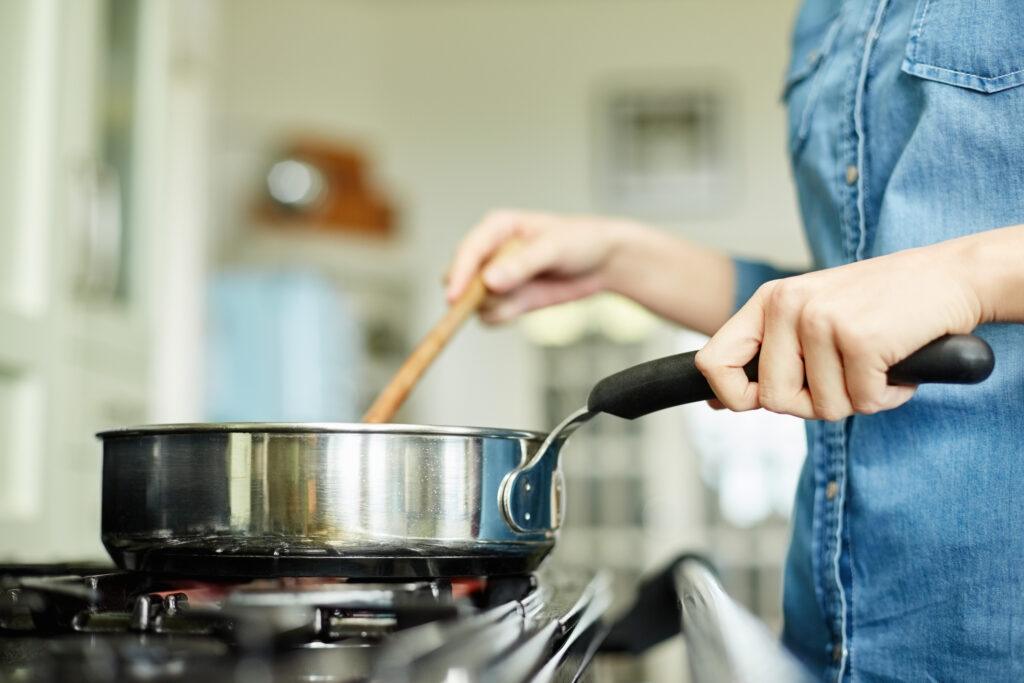
Regularly cleaning your stainless steel and removing dirt and grime quickly offers a simple and effective look for your kitchen. You can continue to invite people into your home with pride as surfaces gleam.
While stainless steel can dull over time and become lifeless, there are strategies like using a mixture of water and oil as explained, together with a bit of elbow grease to bring back the sparkle and shine.
The longer you leave the grime, grease, and dirt, the harder it will be to return it to its gleaming newness. Therefore, the best advice we can give is to clean little and often rather than leaving it until it becomes a mammoth task that you won’t want to undertake.
Conclusion
It is important to check your manufacturer’s instructions before using any of the methods suggested here. However, all the hints and tips are field tested and proven to bring back the shine to your appliances.
Stainless steel, more than any other material, can help to bring life to a kitchen and offer a surface to be proud of. Help avoid scratches that lead to corrosion, and your kitchen surfaces will last many years without needing renewal.
Should you be constantly battling water marks, it may be time to invest in a water softener which will eliminate the minerals that cause limescale completely. If you’d like to learn more about how softened water could help your home, get in touch with the Harvey Water Softeners team today!
